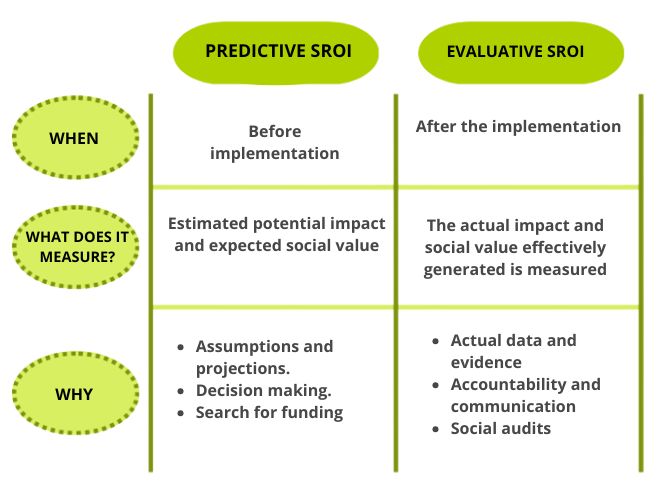In a world where organizations seek not only to generate economic benefits, but also a positive social and environmental impact, it is necessary to have tools to evaluate this value in a quantifiable way. In this context, the SROI (Social Return on Investment) methodology is a key tool for measuring the real impact of projects beyond their economic profitability, translating social results into financial terms and providing a solid basis for strategic management and justification of results.
What is SROI?
The SROI is a tool that allows quantifying in monetary terms the social, environmental and economic value generated by a project. Unlike traditional indicators, which only measure economic profitability, the SROI broadens the perspective and integrates the intangible benefits generated by sustainable projects, such as improved self-esteem, empowerment and social inclusion, among others.
What is SROI used for?
The fundamental question answered by this methodology is: “For each monetary unit invested, how much total value – economic, social and environmental – has been generated?”. For example, the implementation of an action with an SROI of 4:1 indicates that, for every euro invested, four euros of value to society have been produced. This tool therefore provides project developers with a complete picture of the impact of their investments.
At what point can I implement SROI in a project?
There are two main types of SROI analysis:
- Predictive SROI: used during the planning phase to estimate potential impact and guide design and funding decisions.
- Evaluative SROI: applied to projects already implemented, to measure actual results and improve future developments.

How is an SROI analysis performed?
The SROI methodology follows a series of structured steps:
- Define scope and identify stakeholders: The objective of the analysis is defined and key stakeholders are identified, considering all affected groups.
- Mapping results: It is visualized how the project activities generate results, making it necessary to collect qualitative data through interviews.
- Evidence and value the results: Indicators and valuation techniques are used to convert results into economic figures.
- Establishing the Impact: It discusses how the identified changes are attributable to the intervention itself, taking into account other external factors that could have influenced the results.
- Calculate SROI: The total value generated by the intervention is compared with the investment made, considering economic and non-economic resources used.
- Report results: A report summarizing the results of the SROI analysis is presented to stakeholders.
What are the advantages of applying SROI analysis for companies?
The benefits of applying the SROI methodology in a company go far beyond measuring social impact. Implementing it positions the organization as a leader in sustainability, transparency and long-term value creation.
1. Demonstrates the social and environmental value generated.
SROI translates social and environmental impacts into understandable economic values, making it possible to show with concrete data how investments generate benefits for people and the environment, beyond financial results.
2. Facilitates strategic decision making
By quantifying social benefits, SROI helps to prioritize investments with the greatest positive impact and optimize resources. This allows companies to allocate resources more strategically.
3. Increases trust and credibility
Having a quantified and verifiable SROI reinforces the confidence of investors, public administrations, local communities and customers. Communicating evidence-based results positions the company as transparent and committed to real sustainability.
4. Improved access to sustainable financing
Investors and financial institutions increasingly value evidence of impact. SROI helps to demonstrate the social return of projects, making it easier to obtain green or ESG financing.
5. Complies with international sustainability standards
SROI easily integrates with frameworks such as the UN SDGs, ESG criteria, EU Green Taxonomy or GRI standards. This helps companies align their sustainability reporting with global best practices.
6. Strengthens corporate reputation and social license to operate.
Communicating the social return on investment strengthens the relationship with local communities, partners and administrations. It demonstrates commitment to sustainable development and gains legitimacy, which is key in infrastructure and energy projects.
How can EHS Techniques help you when implementing the SROI methodology?
EHS Techniques is already working on the implementation of this methodology.
Our objective is to identify which actions can be carried out in the field of social relations of a project, and in the calls for public tenders, so as to take into account not only the cost and monetary benefit, but also the social impact of the interventions and the social and environmental benefits that we can achieve in the territory of action.
We balance the economic cost of each action with its social and environmental impact on the territory, helping our clients to make decisions in order to select the most appropriate action at all times, both for them and for their stakeholders.
Company
The EHS Techniques team and its experience guarantee a close and flexible service adapted to our clients and the implementation of the most advanced technologies internationally at reasonable costs. Contact us at
International experience
We have the international experience to continue offering this service to continue offering this service anywhere in the world.

 Español
Español